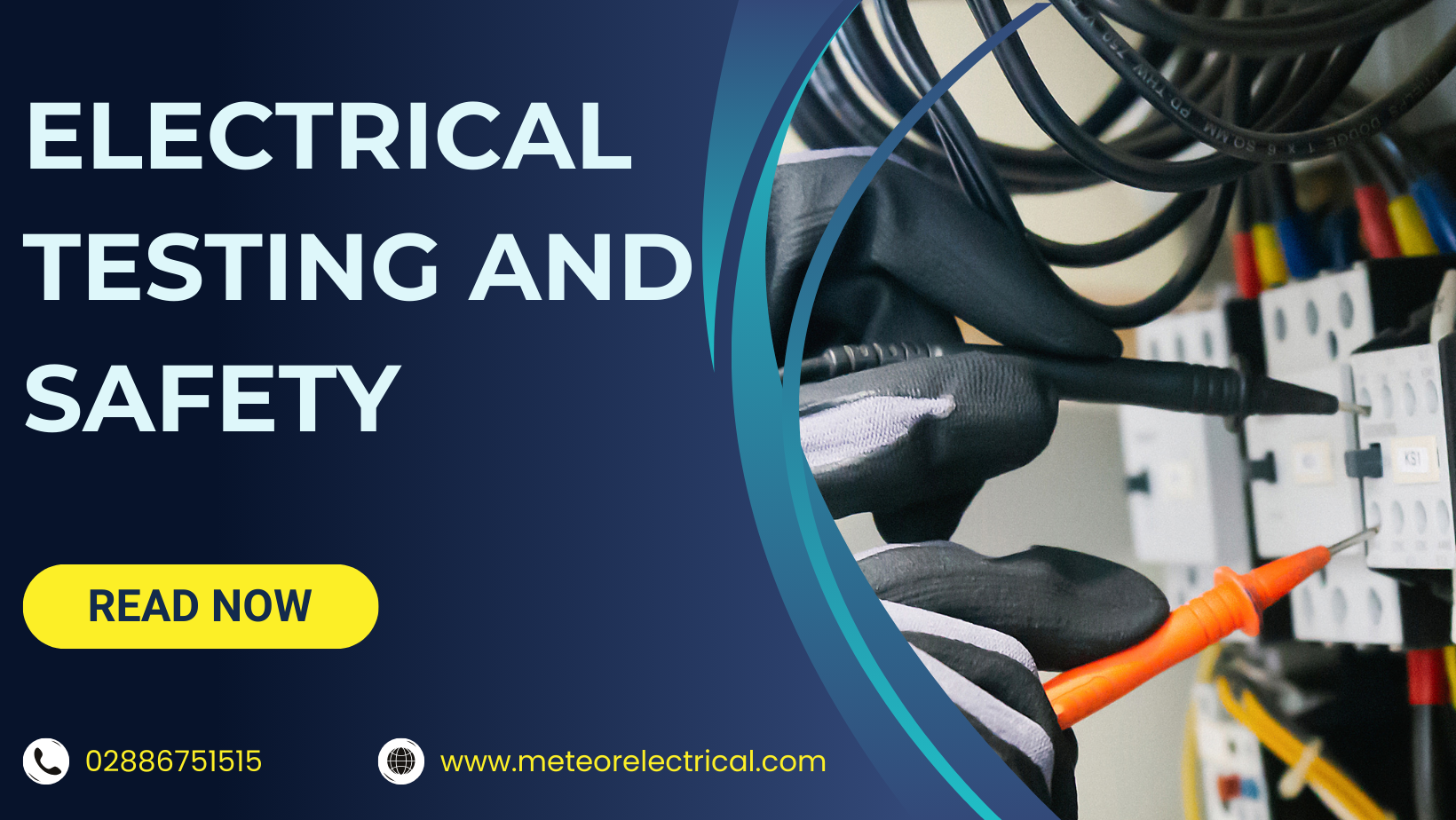A Complete Guide to Electrical Testing and Safety
Electrical testing is an essential process in ensuring the safety and functionality of electrical systems. Whether you're an experienced electrician or a DIY enthusiast, understanding various electrical testing methods, best practices, and safety protocols is crucial. In this comprehensive guide, we'll cover everything you need to know about electrical testing and safety.
Why Electrical Testing is Important
Electrical testing helps identify potential issues in electrical systems before they become major problems. Regular testing can prevent electrical fires, equipment failures, and other hazards (Electrical Safety First). It ensures that electrical installations comply with safety standards and regulations, providing peace of mind to both installers and users.
Common Electrical Testing Methods
1. Visual Inspection
A visual inspection is the first step in any electrical testing process. This involves checking the physical condition of electrical components, wiring, and connections. Look for signs of wear and tear, corrosion, loose connections, and any visible damage (NFPA).
2. Continuity Testing
Continuity testing checks if there is a complete path for current to flow through a circuit. Using a continuity tester or a multimeter, you can ensure that all connections are intact and that there are no breaks in the circuit (Fluke).
How to Use a Multimeter for Beginners - How to Measure Voltage, Resistance, Continuity and Amps
3. Insulation Resistance Testing
Insulation resistance testing measures the resistance of electrical insulation to ensure it is not degraded. This test helps prevent electrical shocks and short circuits. An insulation resistance tester, also known as a megohmmeter, is used to perform this test (Megger).
Insulation Resistance Testing | Understanding Insulation Resistance and Polarization Index
4. Earth/Ground Testing
Earth testing verifies that the grounding system is effective and safe. Proper grounding is essential for the safety of electrical systems, as it provides a path for fault currents to flow to the ground, reducing the risk of electric shock. Earth resistance testers are used for this purpose (Schneider Electric).
Earth Ground Resistance Testing
5. Polarity Testing
Polarity testing ensures that the live, neutral, and earth wires are connected to the correct terminals. This test is crucial for the proper functioning of electrical devices and to prevent potential hazards. Understanding electric wire colours is crucial for this test (IEE Wiring Regulations).
6. Loop Impedance Testing
Loop impedance testing measures the total impedance of a circuit. This test is important for verifying that protective devices, such as circuit breakers, will operate correctly in the event of a fault (Seaward).
7. RCD Testing
Residual Current Devices (RCDs) are crucial for preventing electric shocks. RCD testing ensures that these devices trip at the correct current levels and within the specified time frames (HSE).
Best Practices for Electrical Testing
1. Use Proper Equipment
Always use high-quality, calibrated testing equipment. Faulty or inaccurate equipment can lead to incorrect results and potential hazards (Fluke).
2. Follow Manufacturer Instructions
Adhere to the manufacturer's instructions and guidelines for both the testing equipment and the electrical components being tested (Schneider Electric).
3. Keep Detailed Records
Maintain detailed records of all tests performed, including the results and any actions taken. This documentation is important for future reference and for compliance with safety regulations (NFPA).
4. Regular Training
Ensure that all personnel involved in electrical testing are properly trained and up-to-date with the latest testing techniques and safety protocols (Electrical Safety Foundation International).
Safety Protocols for Electrical Testing
1. De-energize Circuits
Before performing any electrical tests, ensure that the circuits are de-energized. Use lockout/tagout procedures to prevent accidental re-energization (OSHA).
2. Personal Protective Equipment (PPE)
Wear appropriate personal protective equipment, such as insulated gloves, safety glasses, and protective clothing, to minimize the risk of electric shock and injury (NFPA).
3. Follow Safe Work Practices
Always follow safe work practices, such as keeping a safe distance from live parts, using insulated tools, and avoiding contact with conductive surfaces (IEC).
4. Verify Test Results
After performing tests, verify the results to ensure they are within acceptable limits. If any issues are identified, take corrective actions immediately (Schneider Electric).
Understanding IP Ratings
One crucial aspect of electrical safety is understanding IP ratings. The IP rating chart helps in determining the degree of protection provided by electrical enclosures against dust and water ingress. It's essential for ensuring the durability and safety of electrical installations, especially in challenging environments (IEC).
Selecting the Right Tools and Equipment
Using the right tools and equipment is crucial for effective electrical testing and safety. For instance, choosing the correct swa gland size chart can help in ensuring proper connections and protection of armoured cables. This is vital for both safety and compliance with standards (Cablofil).
Handling Different Electrical Components
Understanding various electrical components is essential for accurate testing and safety. For example, knowing the 3 core and earth colours can aid in proper wiring and testing, ensuring that all connections are correctly made and safe to use.
Conclusion
Electrical testing and safety are critical components of maintaining safe and reliable electrical systems. By understanding and implementing various testing methods, best practices, and safety protocols, you can prevent hazards and ensure the proper functioning of electrical installations. At Meteor Electrical, we provide a wide range of high-quality testing equipment and resources to help you stay safe and compliant. Explore our product catalogue today to find the best tools for your electrical testing needs.

